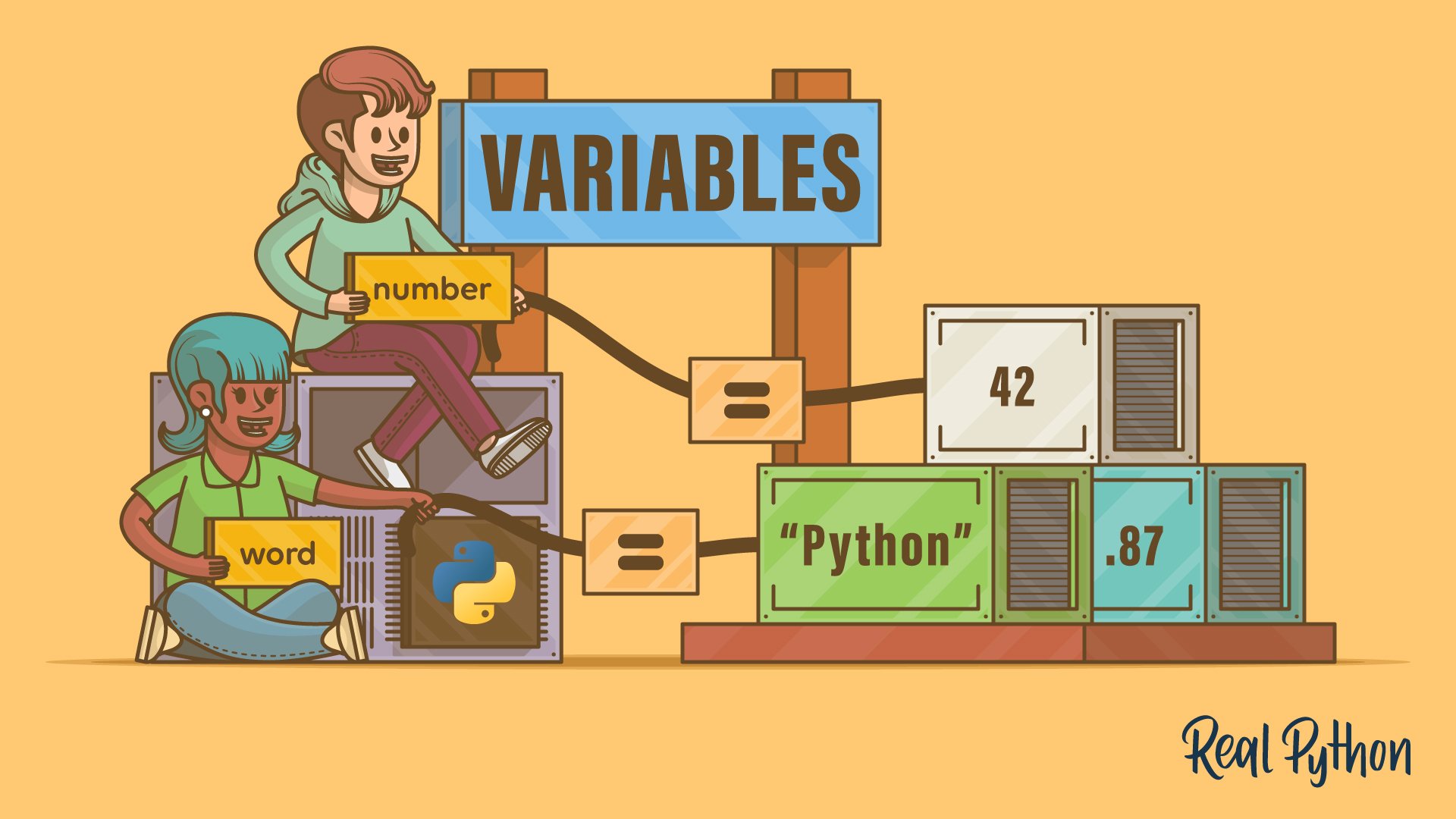Variables in Python: Usage and Best Practices
by:
blow post content copied from Real Python
click here to view original post
In Python, variables are symbolic names that refer to objects or values stored in your computer’s memory. They allow you to assign descriptive names to data, making it easier to manipulate and reuse values throughout your code.
Understanding variables is key for Python developers because variables are essential building blocks for any Python program. Proper use of variables allows you to write clear, readable, and maintainable code.
In this tutorial, you’ll learn how to:
- Create and assign values to variables
- Change a variable’s data type dynamically
- Use variables to create expressions, counters, accumulators, and Boolean flags
- Follow best practices for naming variables
- Create, access, and use variables in their scopes
To get the most out of this tutorial, you should be familiar with Python’s basic data types and have a general understanding of programming concepts like loops and functions.
Don’t worry if you don’t have all this knowledge yet and you’re just getting started. You won’t need this knowledge to benefit from working through the early sections of this tutorial.
Get Your Code: Click here to download the free sample code that shows you how to use variables in Python.
Take the Quiz: Test your knowledge with our interactive “Variables in Python: Usage and Best Practices” quiz. You’ll receive a score upon completion to help you track your learning progress:
Interactive Quiz
Variables in Python: Usage and Best PracticesIn this quiz, you'll test your understanding of variables in Python. Variables are symbolic names that refer to objects or values stored in your computer's memory, and they're essential building blocks for any Python program.
Getting to Know Variables in Python
In Python, variables are names associated with concrete objects or values stored in your computer’s memory. By associating a variable with a value, you can refer to the value using a descriptive name and reuse it as many times as needed in your code.
Variables behave as if they were the value they refer to. To use variables in your code, you first need to learn how to create them, which is pretty straightforward in Python.
Creating Variables With Assignments
The primary way to create a variable in Python is to assign it a value using the assignment operator and the following syntax:
variable_name = value
In this syntax, you have the variable’s name on the left, then the assignment (=) operator, followed by the value you want to assign to the variable at hand. The value in this construct can be any Python object, including strings, numbers, lists, dictionaries, or even custom objects.
Note: To learn more about assignments, check out Python’s Assignment Operator: Write Robust Assignments.
Here are a few examples of variables:
>>> word = "Python"
>>> number = 42
>>> coefficient = 2.87
>>> fruits = ["apple", "mango", "grape"]
>>> ordinals = {1: "first", 2: "second", 3: "third"}
>>> class SomeCustomClass: pass
>>> instance = SomeCustomClass()
In this code, you’ve defined several variables by assigning values to names. The first five examples include variables that refer to different built-in types. The last example shows that variables can also refer to custom objects like an instance of your SomeCustomClass class.
Setting and Changing a Variable’s Data Type
Apart from a variable’s value, it’s also important to consider the data type of the value. When you think about a variable’s type, you’re considering whether the variable refers to a string, integer, floating-point number, list, tuple, dictionary, custom object, or another data type.
Python is a dynamically typed language, which means that variable types are determined and checked at runtime rather than during compilation. Because of this, you don’t need to specify a variable’s type when you’re creating the variable. Python will infer a variable’s type from the assigned object.
Note: In Python, variables themselves don’t have data types. Instead, the objects that variables reference have types.
For example, consider the following variables:
>>> name = "Jane Doe"
>>> age = 19
>>> subjects = ["Math", "English", "Physics", "Chemistry"]
>>> type(name)
<class 'str'>
>>> type(age)
<class 'int'>
>>> type(subjects)
<class 'list'>
Read the full article at https://realpython.com/python-variables/ »
[ Improve Your Python With 🐍 Python Tricks 💌 – Get a short & sweet Python Trick delivered to your inbox every couple of days. >> Click here to learn more and see examples ]
November 04, 2024 at 07:30PM
Click here for more details...
=============================
The original post is available in Real Python by
this post has been published as it is through automation. Automation script brings all the top bloggers post under a single umbrella.
The purpose of this blog, Follow the top Salesforce bloggers and collect all blogs in a single place through automation.
============================



Post a Comment